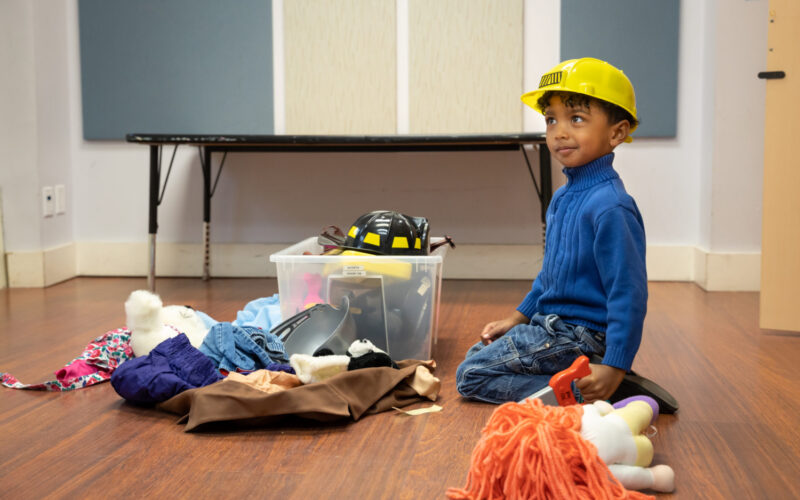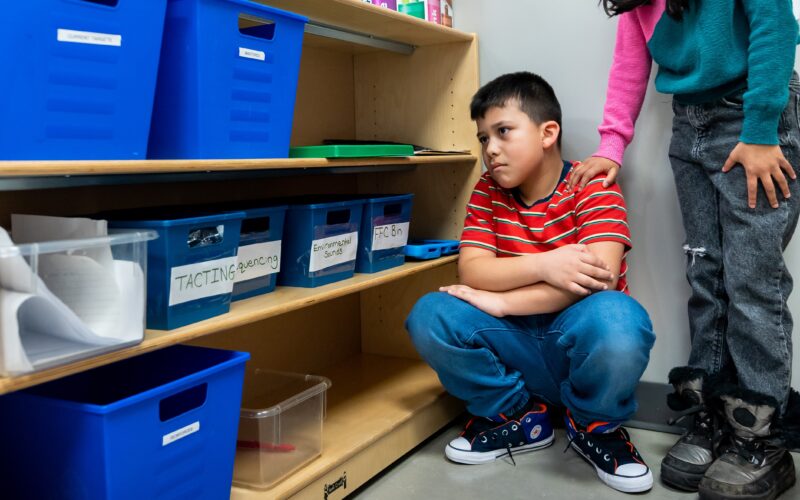If you have a child with autism who has challenging behaviours, you may be wondering what strategies you can use at home to prevent escalation. One strategy to consider is a behaviour contract. Some families experiencing challenges behaviours may also benefit from our Urgent Response Services.
A behaviour contract is a written agreement that relies on positive reinforcement to help promote behavioural change. When the parent and child collaborate to come up with a mutually beneficial plan, a behaviour contract can be a powerful tool for shaping positive behaviour while minimizing more challenging ones.
What is a behaviour contract?
A behaviour contract is a written agreement between a parent or caregiver and their child that outlines expected behaviours during a specific timeframe. The child understands that they will earn a reward at the end of the timeframe if they follow the rules laid out in the contract. The idea is to encourage behaviours that you want to see in your child. Examples of behaviours you may want to teach your child include:
- Keep your hands to yourself
- Ask for a break when you need one
- Be gentle when playing with toys
How to create a behaviour contract for autism
A behaviour contract can be created with the help of a Board-Certified Behaviour Analyst (BCBA) or you can create one on your own. Either way, it should be developed in collaboration with your child – this is key to the success of the contract. When you give your child a chance to provide input, they feel more ownership over the project, which increases their motivation to stick to the agreement.
To create a behaviour contract, follow these steps:
- Have a conversation with your child. Tell them the behaviours you would like to see them learn.
- Use clear and concise language when discussing the behaviours included in the contract.
- Be careful not to include too many behaviours. Start small and build from there. You want to set up your child for success and ensure they receive the reward.
While the contract you create with your child will be based on your child’s specific needs, behaviour contracts often have some common features. These include:
- The date the contract is created
- The behaviour(s) the child is expected to engage in
- How long the behaviour should last (for example, “work quietly for 15-minutes at a time.”)
- The schedule for when and how often your child gets to access their reward (e.g., at the end of each day or at the end of each week.) Although the idea is for the reward to be delayed to a certain extent, consider how long your child can reasonably wait to receive it.
- The agreed upon reward (sometimes referred to as a “reinforcer”)
- A section for you and your child to sign, that shows what each person has agreed to.
How is a behaviour contract for autism useful?
A behaviour contract has many benefits for you and your child.
Increases motivation: A behaviour contract can increase your child’s motivation to engage in positive behaviours. It can also make your child more aware of their actions, which can help them monitor their own behaviour. This makes it easier for them to change their behaviour and earn their reward.
Creates consistency: By providing the child with predictable outcomes whenever they follow a rule outlined in the behaviour contract, the contract helps encourage consistent behaviours in anticipation of a consistent reward. (i.e. “If I follow this, I get this.”)
Hold everyone accountable: Both you and your child should sign the contract, so you’re both bound by it. For your child, the contract can also serve as a visual reminder of what they have agreed to do and the reward the parent or caregiver has agreed they will receive.
Creates expectations clear: The contract outlines clear expectations for both the parent or caregivers and child. It tells the child exactly what kind of behaviour is expected of them while making it clear what their caregiver will provide if they meet expectations.
Determine an appropriate reward
A reinforcer – or reward – is an important part of the behaviour contract. This is what helps reinforce the desired behaviour, increasing the likelihood of it happening again. The reward doesn’t necessarily need to be a tangible item. Determine with your child what kind of reinforcer will work best for them.
These are examples of popular reinforcers:
- A snack or treat
- Screen time/video game time
- A break from a task
- Extra one-on-one time with a parent or caregiver
- A favourite activity
If your child doesn’t follow the behaviour contract, try to resist the temptation to let them access the reward. They will have less motivation to follow the rules in the contract if they can still access the reward despite engaging in inappropriate behaviour. It’s extremely important for your child to learn that they will only get their reward when they follow the rules you have agreed upon together. Choose an item that is special and only available at special times. (e.g., If your child always gets a cookie after dinner then a cookie shouldn’t be used as a motivating reward.) This is key to ensuring the success of the behaviour contract.
Important points to keep in mind
When developing a behaviour contract with your child, here are a few guidelines:
Keep it positive: Use clear statements that focus on the positive behaviours you want to see your child engage in for them to access the reward. For example:
- “I will ask for a break when I’m frustrated”
- “I will keep my hands to myself”
- “I will play with toys nicely”
Pay attention to wording: Be sure to use encouraging language that focuses on the positive or replacement behaviours you want to see. Avoid language that focuses on problematic or negative behaviours (e.g., don’t write “I will not run away from my homework” or “I will not hit.”)
Be realistic: Your child should have the skills outlined in the contract. The goal is to build your child’s motivation to use skills they already have, not to try to teach skills they haven’t learned. Otherwise, the child is set up for failure. For example, if a child doesn’t have the skills to keep their hands down, this shouldn’t be a behaviour outlined in the contract.
Be flexible: Behaviour contracts may change over time. If your child is showing a lot of success with the contract, you and your child may decide to add other behaviours. Or you may decide to reduce the frequency of the reward. In some cases, you may need to change the reward if it no longer works as well for your child. Remember to make any changes to the contract in collaboration with your child.
Create a behaviour contract for autism in six steps
Not sure how to get started? Follow these steps to create a behaviour contract with your child:
- Write the date and your child’s name at the top of the page
- Decide on one or two behaviours to target. Then write down the behaviours your child is expected to engage in (for example, “I will keep my hands to myself” or “When I’m angry, I will count to ten to calm myself.”) Remember to write down the positive behaviour that will replace the challenging behaviour.
- If appropriate, write down the length of time. For example, “I will work quietly for 10 minutes.”
- Write down the reward your child will receive when they follow the rules in the behaviour contract. This will be something you and your child agree upon together (for example, time on an iPad, going to the park together, or whatever else will motivate your child.)
- Write down what happens if your child doesn’t fulfill the contract. This will make it clear that if your child doesn’t engage in the appropriate behaviour, they won’t receive the reward.
When the behaviour contract is complete, sign the contract. Instruct your child to sign it as well.
How Surrey Place can help
If you’re a family member or caregiver whose child exhibits high-risk behaviours that require an urgent response, like violent thinking, aggression, or property destruction, you may be eligible for Surrey Place’s Urgent Response Services. For autism support for needs that are not urgent, please visit Surrey Place’s Autism Services page.
About Urgent Response Services
This resource was written with support from staff in the Urgent Response Services. Urgent Response Services are part of the Ontario Autism Program. They were created to support children or youth with an emerging urgent need. Surrey Place leads Urgent Response Services for Toronto Region in partnership with 2-Spirited People of the 1st Nations, Community Living Toronto, Family Service Toronto, Geneva Centre, Holland Bloorview, Kerry’s Place, Lumenus, SAAAC, SMILE Canada and Strides Toronto.


